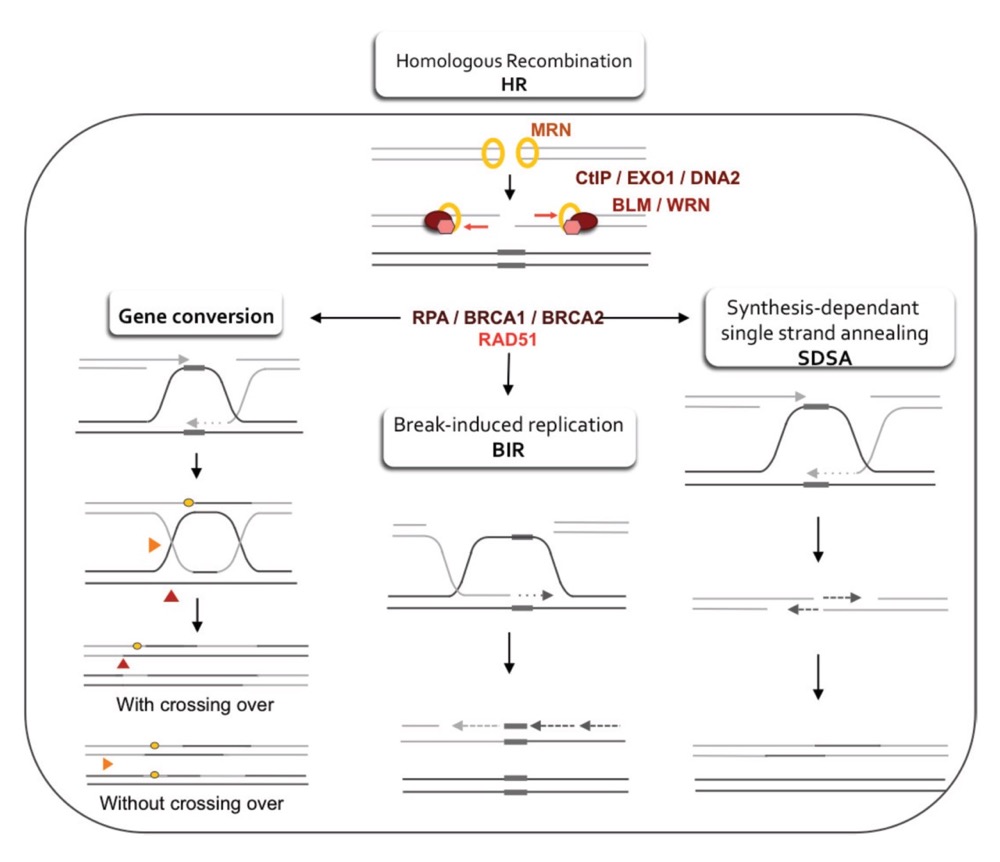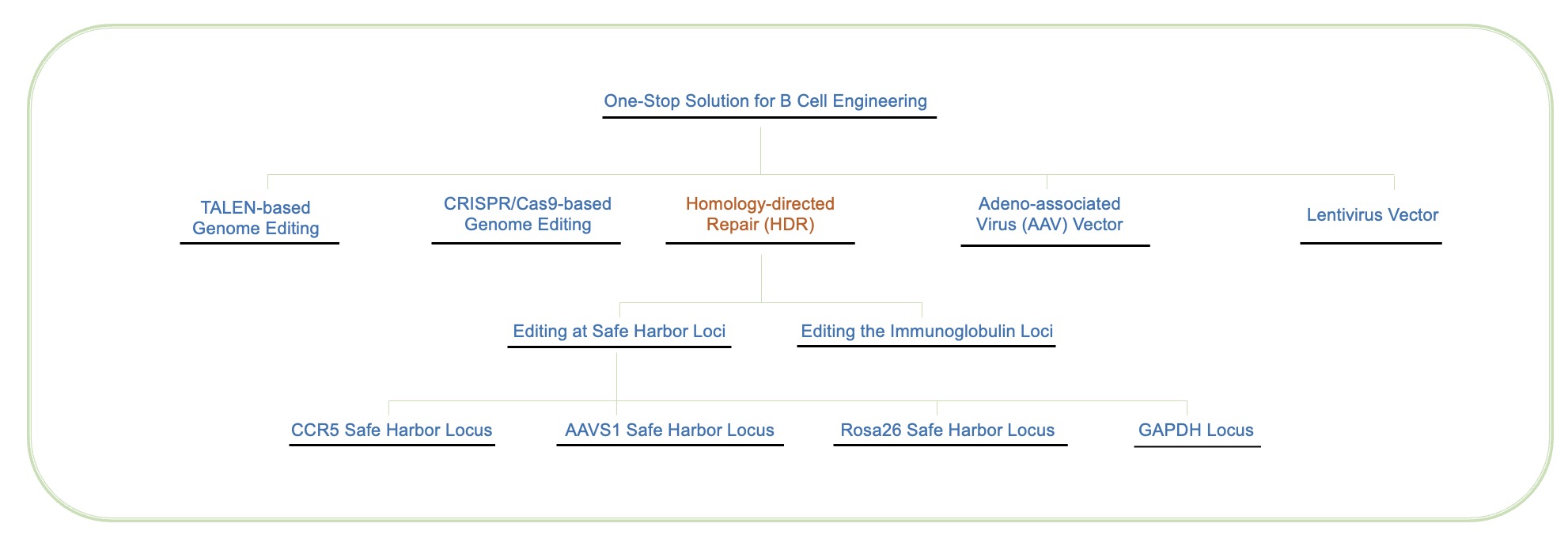As an important kind of nucleic acid repair mechanism, HDR occurs naturally at the genetic level. In simple terms, after the double-stranded DNA in a cell is broken, it can be used to modify the genomes of many organisms. HDR this method can only be used when homologous DNA fragments are present in the nucleus, especially in the S and G2 phases of cells. In addition to HDR, there is also non-homologous terminal ligation (NHEJ) in cells. But NHEJ often triggers unpredictable mutations. As a pioneer in B cell therapy, Creative Biolabs brings customers a full range of gene editing technologies to achieve various modifications of B cells.
 Fig.1 Double-strand break repair models. (Wikipedia)
Fig.1 Double-strand break repair models. (Wikipedia)
Creative Biolabs provides comprehensive B cell engineering services to help you achieve your project target. For more technologies about B cell engineering, please inquire our One-Stop Solution for B Cell Engineering.
 Fig.2 Our one-stop solution for B cell engineering. (Creative Biolabs)
Fig.2 Our one-stop solution for B cell engineering. (Creative Biolabs)
Creative Biolabs provides HDR technology to help you engineer B cell for experiment needs. In detail, HDR can be used to modify/repair genomes in B cell. With the mature technology and professional team, Creative Biolabs uses CRISPR/Cas9 system to control the specificity of HDR genome engineering techniques.
Except above, Creative Biolabs also provides a unique service for customs to enhance HDR:
Paper Title: Engineering protein-secreting plasma cells by HDR in primary human B cells
Technology: HDR
Journal: Cell
IF: 12.91
Published: 2017
Background: As an RNA-guided nuclease platform, the CRISPR/CRISPR-associated protein 9 (Cas9) system is easily engineered. It can efficiently target specific sites in the genome for cleavage, and generate double-strand DNA breaks. With plasmid- or LV-based CRISPR/Cas9 delivery, the use of site-specific nucleases for gene disruption or HDR in B cells is limited to transformed or lymphoma-derived cell lines and murine models.
Results: This article described that high-efficiency genome editing in human peripheral blood B cells by delivering CRISPR/Cas9 ribonucleoprotein (RNP) complexes alone or in combination with single-stranded DNA oligonucleotide (ssODN) or adeno-associated virus (AAV) repair templates, respectively. Moreover, this article also showed that edited primary B cells can be subsequently differentiated in culture into plasma cells that produce physiological doses of therapeutic proteins, including human factor IX (FIX).
Q1: What can be used to favor the HDR Pathway?
A: Chemical and genetic modulation.
We offer professional consultation guidance before, during and after the project, please contact us for your tailored solution.